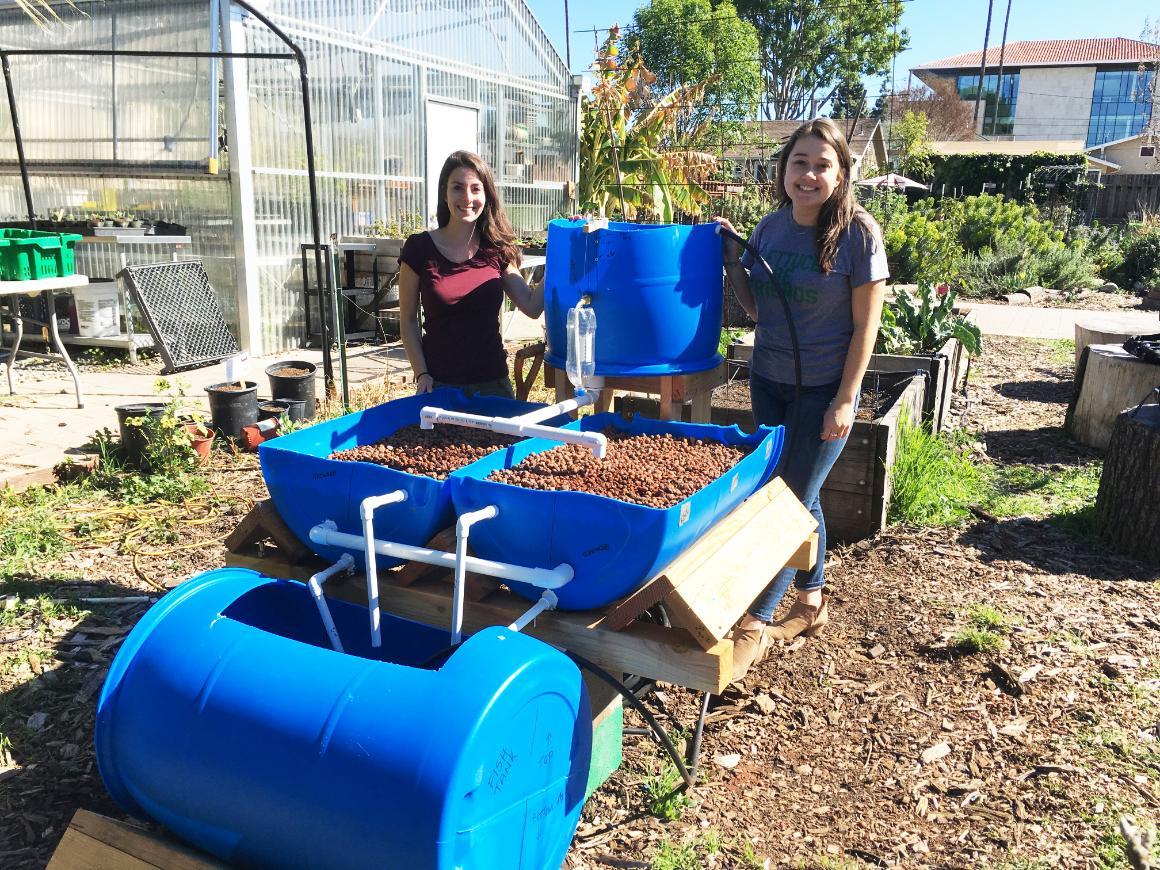
Climate Smart Farming for Uganda
Coming from different concentrations within civil engineering, but with a shared desire to work on a humanitarian engineering project in a developing country, seniors Lauren Oliver and Cristina Whitworth are designing and implementing a climate smart farming system to enable women in rural Uganda to provide for their families and increase their monthly income. “Climate change disproportionately impacts developing nations, and in particular, women and girls—mostly because they are ill-equipped to handle the increased variations in climate resulting in more floods and more droughts,” said the students’ advisor, Civil Engineering Adjunct Lecturer Laura Doyle.
The pair was pitched this senior design project opportunity by the School of Engineering’s Frugal Innovation Hub in conjunction with Collaborative Enterprise Exchange, a nonprofit with a mission to “develop leaders who drive the social transformation required to bring about a just, resilient, and sustainable world.”
With Oliver’s background in water resources and Whitworth’s in sustainable construction, the project was a great fit. “It’s focused on sustainable agriculture, but drawing on both of our skillsets, we’re using recycled and locally available materials, solar power, sensors, and pumps to circulate water through the system. And it’s a humanitarian project, which was important to us,” said Oliver. Their sustainable system uses 20 times less water than typical farming techniques, requires less land, and allows women to grow the food they need—reducing transport. Also, because the system—which uses aquaponics for growing vegetables and raising fish—does not rely on fertilizers, it reduces climate impact.
Akin to hydroponics, aquaponics grows plants in water rather than soil, but adds fish to the mix in a symbiotic system, Oliver explained. “The fish are not swimming in the same water where the plants are growing—they would eat the roots—but the system takes advantage of the fact that fish give off nutrients which are beneficial to plants, and plants give off nutrients and filter the water of potentially harmful elements, both of which help the fish and plants thrive. Water is pumped though the plants which drains into the fish tank and cycles back to the plants.”
“It’s basically a really big nutrient exchange,” added Whitworth, “but you have to find the right balance—too many fish and the ammonia they produce could kill all your plants.”
To design their system, the duo’s first step was to determine design constraints for their product. “We learned from the women’s collective that they wanted an aquaponics system that combined produce, chickens, and fish. We dove into the internet to find a way to connect these elements. Their only constraint was to build it ‘as small as possible,’ but what does that mean—10 fish, or 50? That phrase became something of a nightmare for us, but we proposed a product and built a prototype here on campus that can be adapted and scaled for any location they choose,” said Whitworth.
They found a barrel-ponics (or frugal aquaponics) system online and adapted it to fit their clients’ needs. “We had to adjust the design so many times because the original wouldn’t work in Uganda, and we added solar because the pump needs to run consistently and draws significantly more power than is generally available there,” said Oliver, who understands that limitation better than most, having spent last summer in Uganda as one of SCU’s Global Social Benefit Fellows.
After much research and design work, Oliver and Whitworth built a working prototype in the University’s Forge Garden. This process was not without its headaches. The marine sealant they’d used peeled off and everything leaked. The resilient tilapia which is farmed in Uganda is illegal in Northern California, so goldfish were selected as stand-ins. Plus, the civil engineers had to learn a lot of mechanical and electrical engineering and wait on a frustrating two-week lag time to allow nutrient buildup in the cycling water before fish could be added to the system. But patience ruled, and by the end of winter quarter their prototype was working like a champ.
Just in time, too, as the pair headed off to Uganda with their advisor over spring break. There, they spent 12 days tweaking a design for the women’s collective, buying materials, and starting the build. “We gained enough experience building our prototype to help them build theirs,” said Whitworth.
“Working on this project has been the most rewarding experience for me at SCU,” said Oliver. “It has allowed me to apply so many skills I have learned, both in my classes and during the Global Social Benefit Fellowship, in a meaningful way that will empower women half a world away. I have dedicated more hours to this project than I have for any other, but it was all worth it when we were working side by side with the women in Uganda, teaching them valuable new skills.”
Nodding her head in agreement, Whitworth said, “It has been an amazing experience to be a part of an engineering project where I’ve been able to work with incredible women on the other side of the world. We’ve worked as a team for months to design a system that will empower women all across East Africa. This project and the group of women have inspired me to continue working on similar projects throughout my career.”